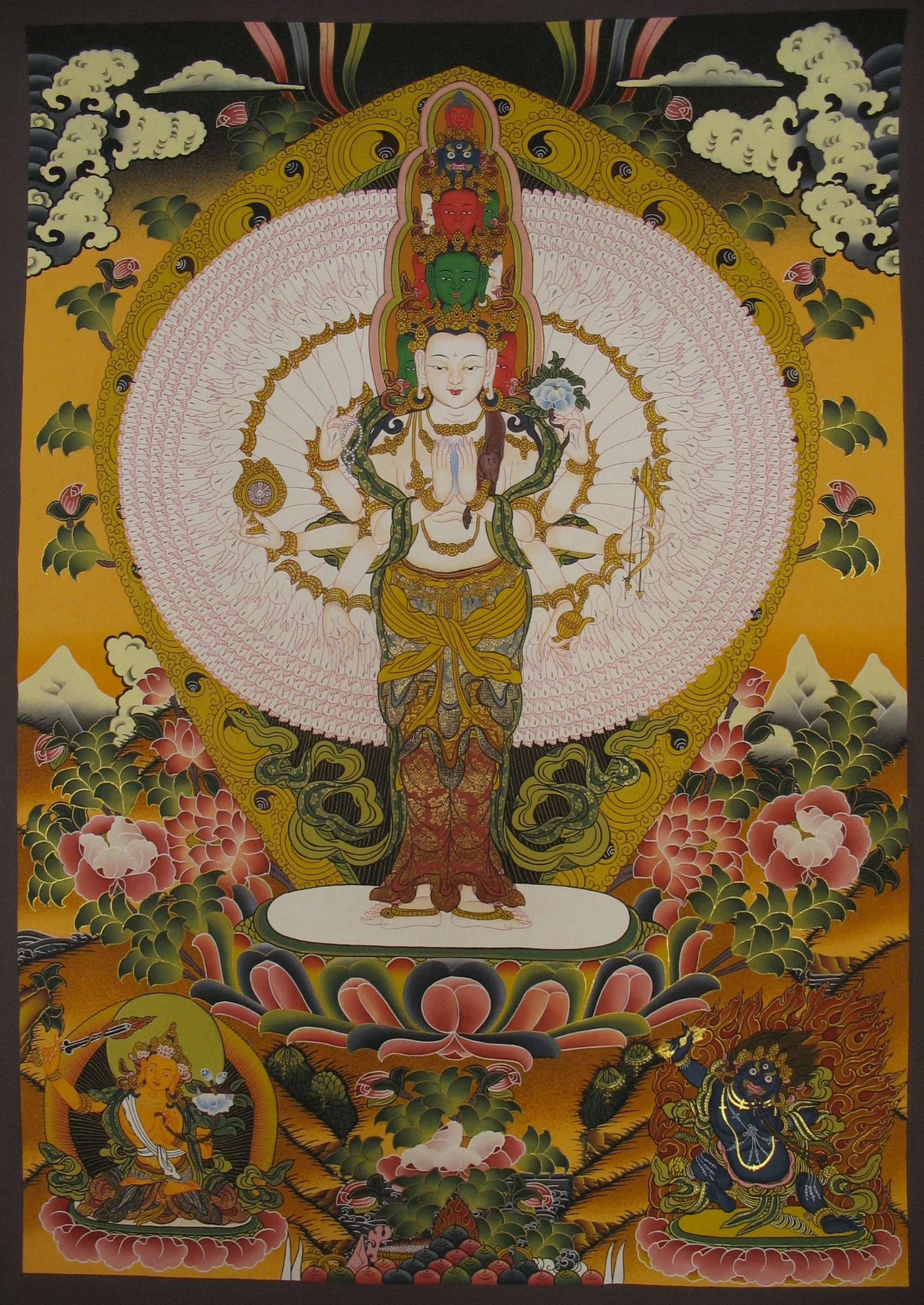




Lokeshvara with 2 Vajrapani
Lokeshvara with 2 Vajrapani is handpainted on cotton canvas by Thangka artist from Nepal. Lokeshvara is a multi-armed form of Avalokiteshvara that seems to have been popular in Nepal since the Middle ages. The name suggests that he is the lord of the world with infallible noose which leads suffering sentient beings to enlightenment.
Lokeshvara presented at the center of the thangka. Two Vajrapani are presented at the bottom right and bottom left corner of the Lokeshvara in the thangka.
Iconography of Lokeshvara
Two Vajrapani are presented at the bottom right and bottom left corner of the Lokeshvara in the thangka. Lokeshvara is the mystery in the center of the world lotus. All his limbs are white. He has one face and wears the saffron dress.
He is wearing an antelope skin symbolizing that he is extremely compassionate to suffering sentient beings. He has eight hands, the right showing the gesture of fearlessness and the boon granting gesture. He is holding the noose and the string of beads, the left holding a trident, a scripture, a white lotus, and a water pot.
Iconography of Vajrapani
Vajrapani is presented at the right down corner of the Lokeshvara in the thangka. Vajrapaṇi is one of the earliest bodhisattvas of Mahayana Buddhism. He is the protector and guide of the Buddha and rose to symbolize the Buddha's power.
Vajrapani is pictured dancing wildly within a halo of flames which represents transformation.
He holds a vajra (thunderbolt) in his right hand which emphasizes the power to cut through the darkness of delusion. Vajrapani looks wrathful, but as a representation of the enlightened mind. He is completely free from hatred.
Mantra of Vajrapani
The mantra of Vajrapani is om vajrapani hum phat.















